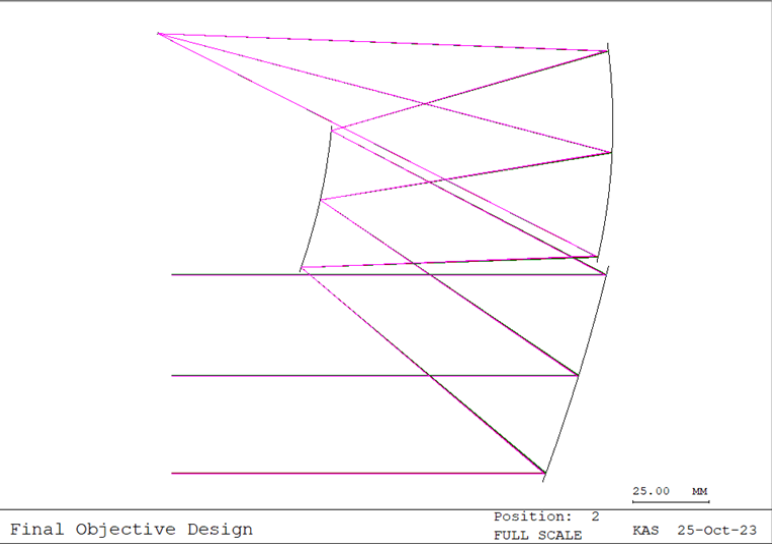CUBESAT
Team Members Customer Daniel Brooks – Optimax Systems, Inc. Mentor Dr. Aaron Bauer – Institute of Optics Abstract The goal of this design project was to build an alignment tool…
Plano Cylinder Lens Metrology System
CYL Team Customer Points of Contact: Chris Toomey, Clayton Summers, Dan Denison, and Scott Rudder Faculty Advisors Abstract There is a growing demand for non-spherical optics in industry. The manufacturing…
DIGITEYEZ
Team Members Mentors and Faculty Advisors Abstract The CLEAR Digiteyez Optimization project is an exploratory Senior Design project to implement and improve various optimization routines already existing in the CLEAR…
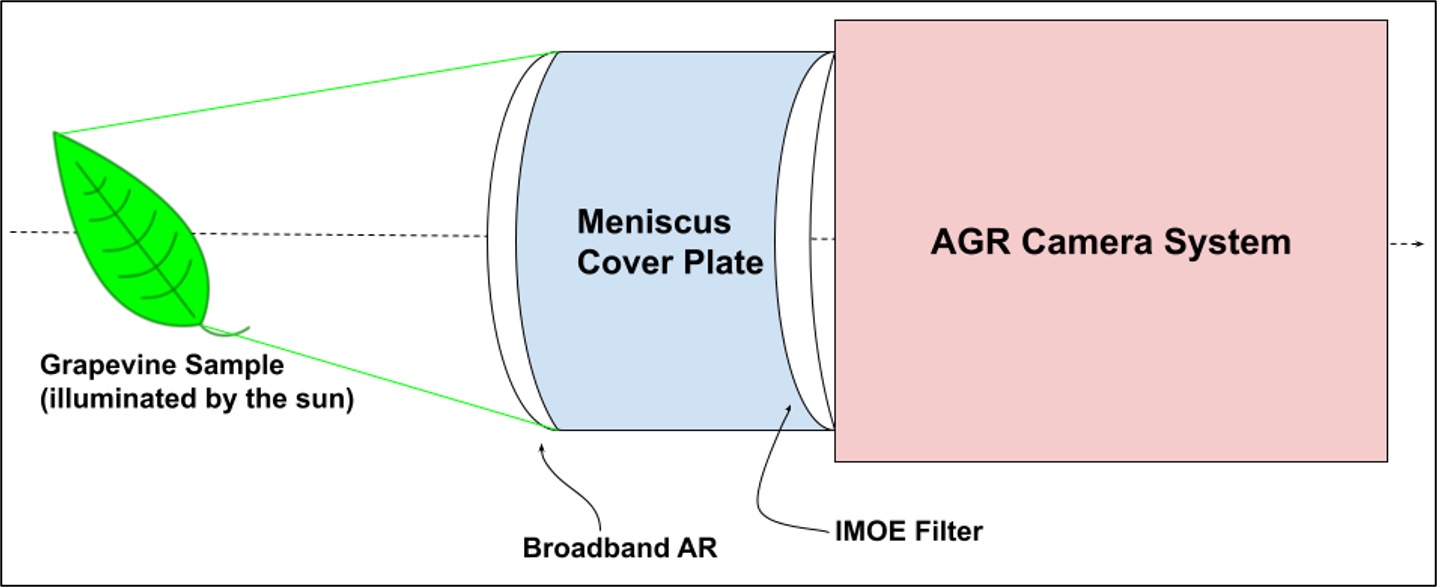
Advanced Growing Resources
This group is designing a broadband anti-reflection coating and an imaging multivariate optical element coating to eliminate the need for software-based image analysis for AGR’s handheld camera system.
CIRCLE-META-RAMA: Hybrid Refractive Metalens Design Project
Team Members Customer Faculty Advisor Prof. Jaime Cardenas Abstract The camera system of Circle Optics is a 360-degree field-of-view stitching-free camera system used for small drones, entertainment, or robotics. The…
ASML Metawave: Wavefront Control via Tunable Metasurface
Team Members Customer Ali Basiri & Luke Potter Faculty Advisor Michele Cotrufo Abstract The envisioned product is a cutting-edge optical correction system leveraging actively tunable metasurfaces. Designed specifically for the…
Microscope Objective for Lithography Wafer Alignment
Team Members Customer Kirill Sobolev, ASML 1 Abstract The purpose of our project is to design an objective lens for the ORION wafer alignment system in ASML’s next-generation lithography machines.…
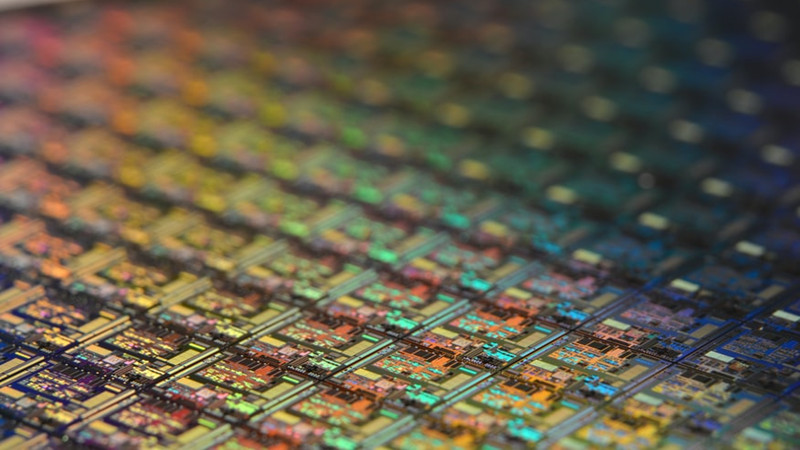
ASML NANO: Sub-nm Vibration Sensor
Abstract The aim of this project is to explore designs for a vibrometer for semiconductor wafer measuring machines. These wafers power all of our modern computers and cellphones, and are…

EDMUND-3DP
The 3D printing project aims to design, create, and test a polymer printed part that houses a f/5.6, eight element system. After the system was completed, repeatability measurements were done along with testing our procedure on the similar f/8 system.
IRL Glasses – Take a Break
Abstract On average, Americans spend 11 hours a day looking at a screen and touch their phones over 2,000 times a day. The goal for the IRL Glasses for this…
Optics Senior Thesis
Variable Incidence Spectroscopic Arrayed Imaging Reflectometry
The goal of VISAIR is to improve upon an existing medical technology Arrayed Imaging Reflectometer (AIR) by illuminating a sample over multiple wavelength and angles of incidence in order to…

Identifying Microplastics and Microfibers in Environmental Samples From Quantitative Material Birefringence Properties
This work investigates material birefringence as a means to determine microplastic identity in samples.
Engineering the Atom-Atom Interactions within Metamaterials
Xukun Lin, Michele Cotrufo Abstract This thesis uses an effective zero-index photonic crystal to support superradiance of atoms within it. I show that the emitted power of the atoms depends…
Adaptive Optics Simulation of Multifocal Contact Lenses
Author Ellen Jiang Mentor Susana Marcos This project is done in collaboration with the Center for Vision Science and Bausch & Lomb Abstract Bifocal and multifocal contact lenses are industry-leading…
Reconfigurable Metasurfaces For Compact, Nontrivial Angular Filtering
Author Nicholas Gaitanis Mentor Dr. Michele Cotrufo Abstract Recent works have shown that angular filters — based on distributed Bragg reflectors — can be utilized in holographic head-mounted displays to…
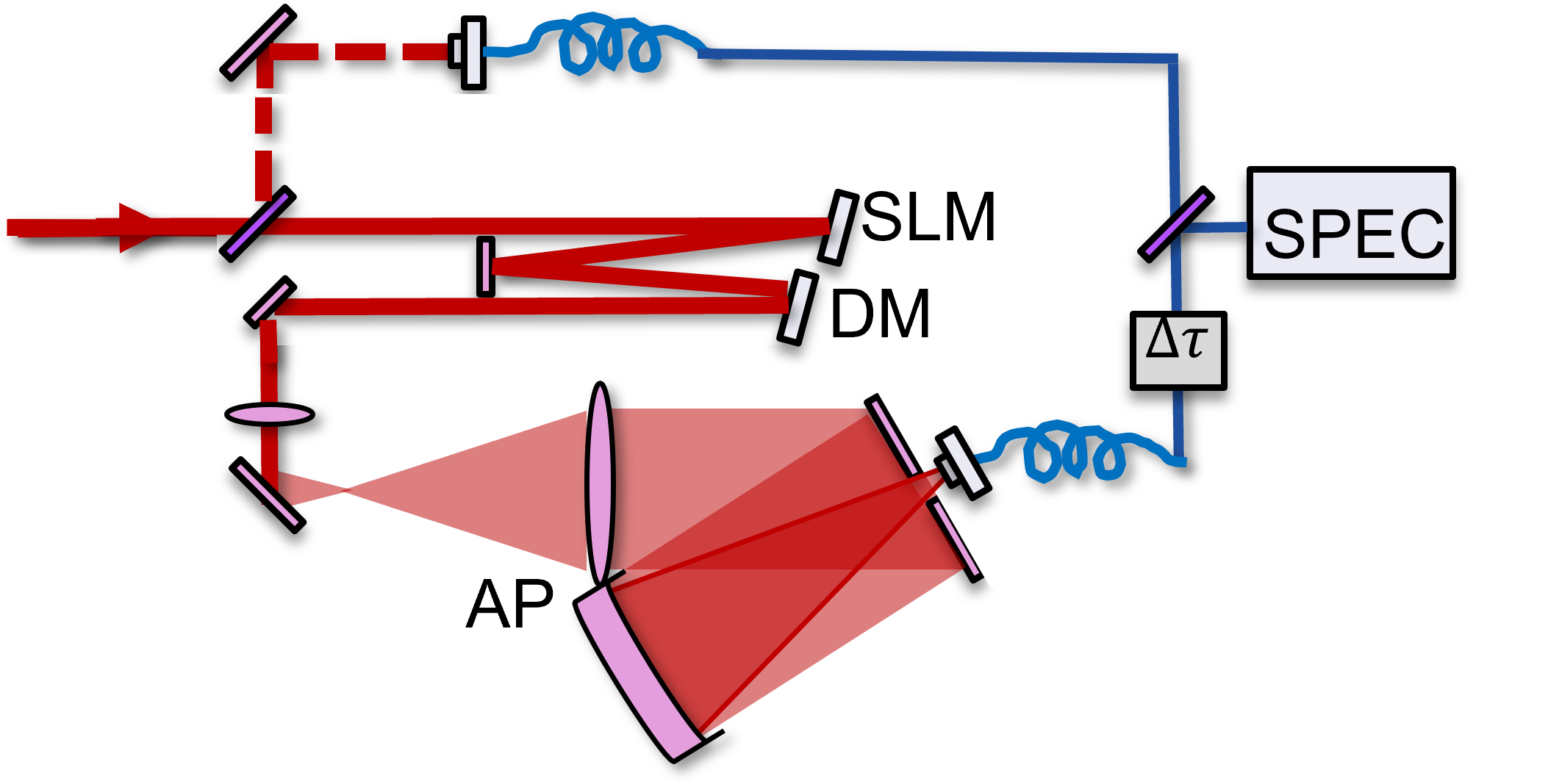
Tunable trajectory ultrabroadband flying focus experimental setup using adaptive optics
The goal of this thesis is to design and build a tunable flying focus experimental setup using adaptive optics. The flying focus technique produces an extended intensity peak which moves at a designed focal velocity independent of the medium group velocity. This requires an optical system that can extend the focal region beyond the Rayleigh length as well as impart sufficient radial group delay to achieve spatiotemporal control. An axiparabola is used to extend the focal region and a deformable mirror imparts a user defined radial group delay to achieve spatiotemporal control. The tunability of this technique will be used to optimize secondary source generation experiments such as laser wakefield acceleration and terahertz generation.
Archive

Kaleigh Rook Mentors Dr. Andrew Berger and Dr. Samantha Romanick “Everything you make returns to the Earth as either food or poison.” Abstract Microplastics have permeated every corner of our…

Nonlinear Propagation of Volumetrically Full Poincaré Beams
Tatsunosuke Hanano Mentor Professor Robert Boyd Abstract Light with structured polarization is called polarization structured beams, and they have gotten attention because of their ability to process more information per…

Pupil mask mask system for a MEMS DM segmented mirror model
Antony Georgiadis Mentors Professor James Fienup and Joseph Tang Abstract Wavefront sensing via phase retrieval algorithms are critical to enabling the use of large aperture systems on the ground and…

Characterizing Single Photon Emitters in Silicon Nitride
Nicholas Achuthan Mentors Professors Pablo Postigo and Jaime Cardenas Abstract Single photon emitters (SPEs) are a key building block for integrated quantum photonic circuits, but current implementations rely on heterogeneous…

ASML Computational Imaging to Compensate Optical Aberrations
The purpose of this project is to create a computational algorithm capable of taking an aberrated image and correct it to a sharp high contrast image. We used optical design…

CubeSat
Team Customer Dr. Daniel Brooks – Optimax Systems Inc. Mentor Dr. Aaron Bauer – Institute of Optics Abstract The goal of this design project was to demonstrate the capabilities of…

IRL
Team Mentor Prof. Jennifer Kruschwitz Background IRL Glasses is a product with the goal of minimizing the amount of technology people have to interact with on a daily basis. The first…

META360 – Hybrid Refractive-Metalens Design
The META360 project seeks to enhance the current Circle Optics 360º field-of-view stitch-free camera system using novel meta-optics technology. Using Synopsys’ new MetaOptic Designer software, we explore the use of meta-optics in a hybrid lens design.

RMSC
Team Mentor Professor Greg Schmidt Abstract Our Group’s Senior Design Team was tasked with designing a museum exhibit for RMSC that offered a fun experience for participants of all ages…

SPLAY
Optical Design of a Compact Projector Lens for a Portable Display Project Vision The desired product is a portable display consisting of a collapsible screen and a compact projector with…
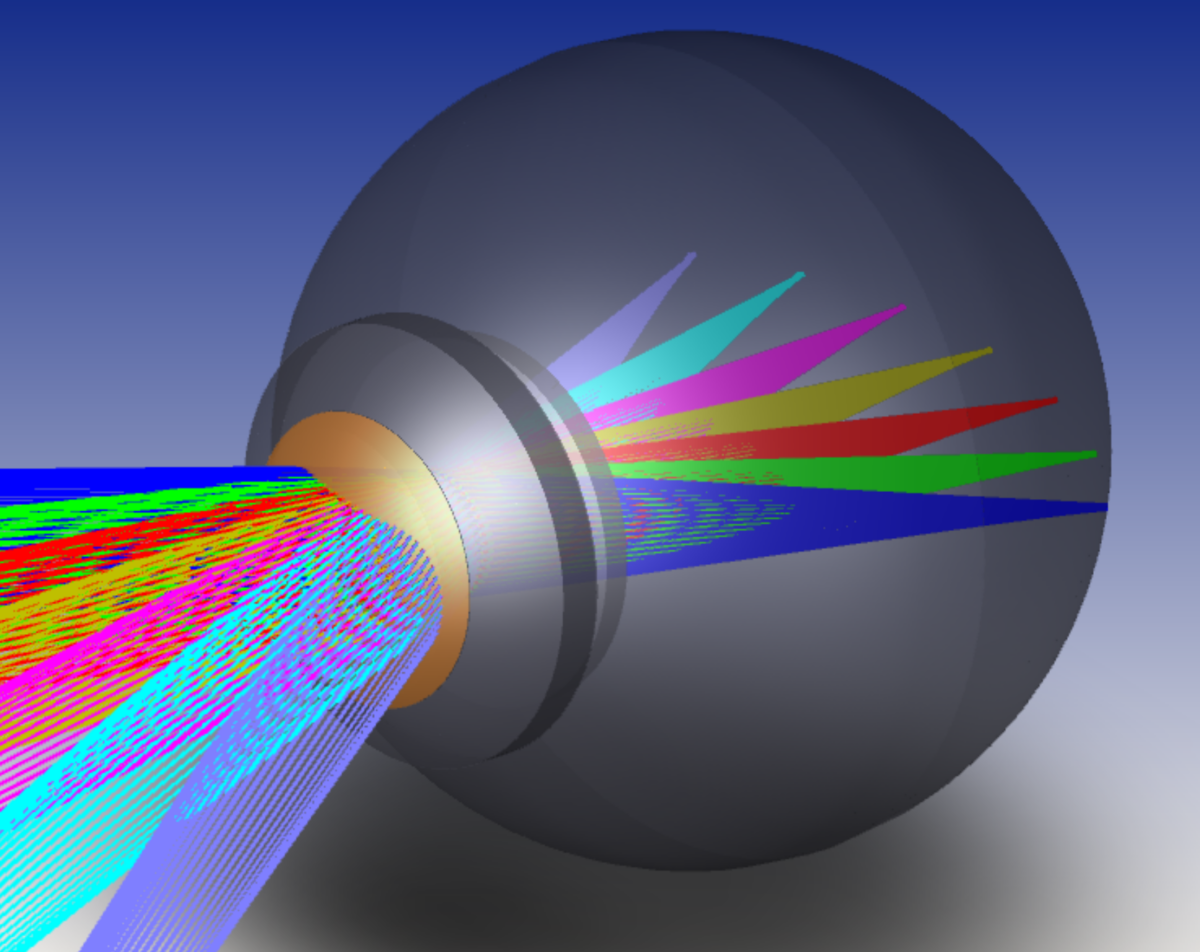
Myopia Control with Optical Design
This senior design-driven project creates accurate Zemax ray-tracing models of the human eye to evaluate diffractive-refractive hybrid contact lenses for correcting wavefront error and chromatic aberration. The eventual goal is to apply the technology to school-aged children to prevent the progression of myopia development.

AGR – A Hyperspectral System with Spatial Resolution
Team Mentor Professor Greg Schmidt Abstract Advanced Growing Resources (AGR), is pioneering targeting systems that send mass pesticide blanketing towards obsolescence. The targeting system that was designed during this project…

iTEST
Team Mentor Brandon Zimmerman Abstract The Clear Eye Exam allows for users to take an eye exam from their home and obtain an eye prescription. This lets people have an…

ASML Broadband Single-mode Fiber Coupler
DCORE4 Team Mentors Govind P. Agrawal, Julie Bentley, Jacob Roccabruno Abstract The optical senior design class at the University of Rochester strives to tackle engineering problems through engineering processes and…

Nighthawk Solutions DIY Telescope Kit for Kids; Inspiration for Science and Technology
Mission Statement The goal of our project is to create a Do-It-Yourself (DIY) telescope that provides an engaging and educational experience for kids. The telescope will come fully disassembled, empowering…
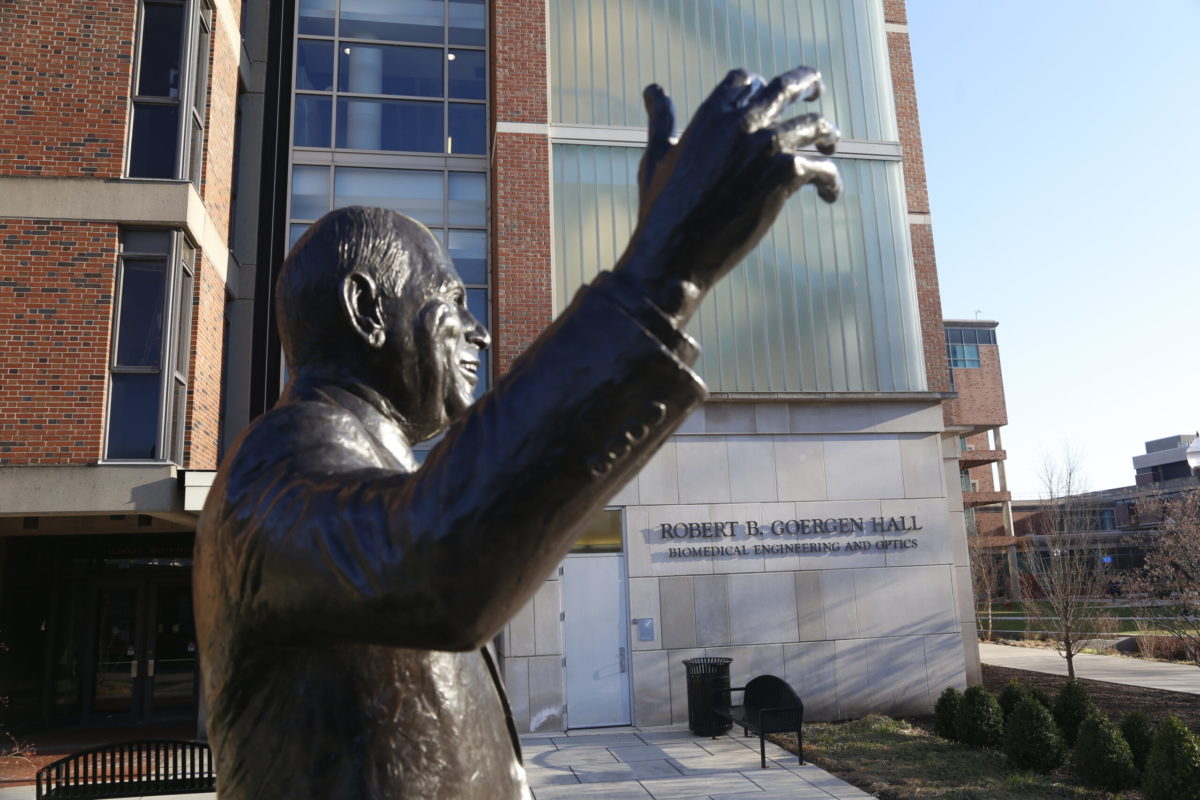
Two-Color Nonlocal Aberration Cancellation
Two-Color Nonlocal Aberration Cancellation is one of the many exciting applications of quantum entanglement. In this experiment we create position-momentum entangled photons via SPDC.

RMSC
We designed an interactive and educational imaging system. The guest will be able to project an image onto a screen.
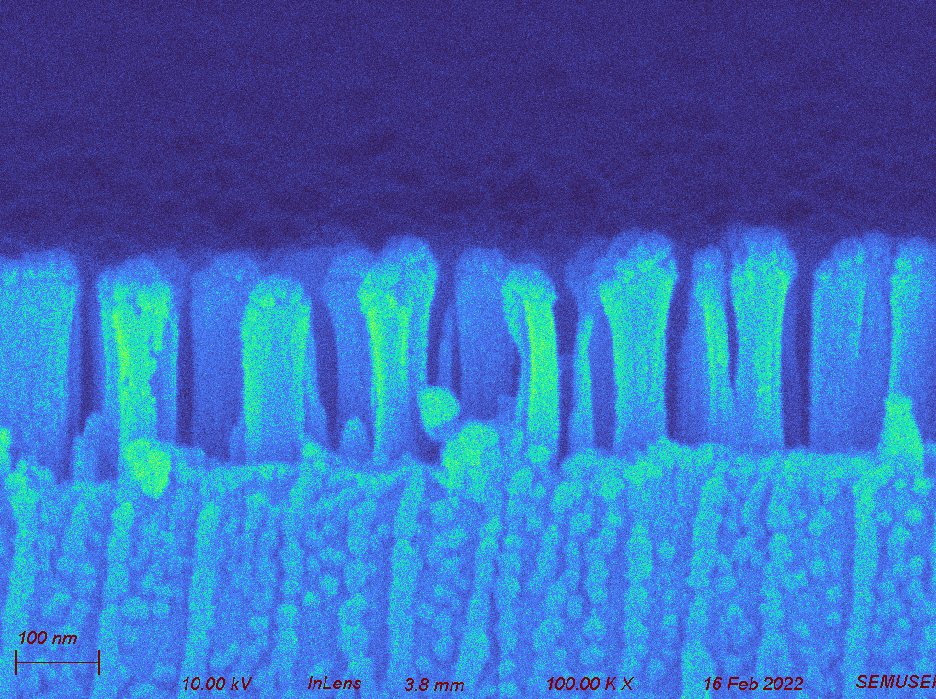
NANOAR
Have you heard of an AR coating without actually coating any materials while working for a wide bandwidth from UV to IR? That is the nanostructure coating.

iMG
Our goal is to use existing tools and our optical knowledge to build a simulation tool that carries out a rigorous optical analysis and simulates the imaging of a satellite at a range of distances, attitudes, and illumination angles.

FIBER
The simulation will model the output characteristics as light travels through the fiber, giving a rare look at a otherwise inaccessible areas of the fiber.
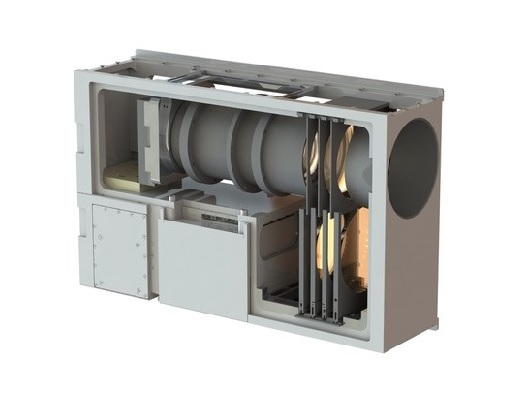
CubeSat
We designed an optical system for a NASA ROSES proposal. The system would be housed within a CubeSat and study Zodiacal light.
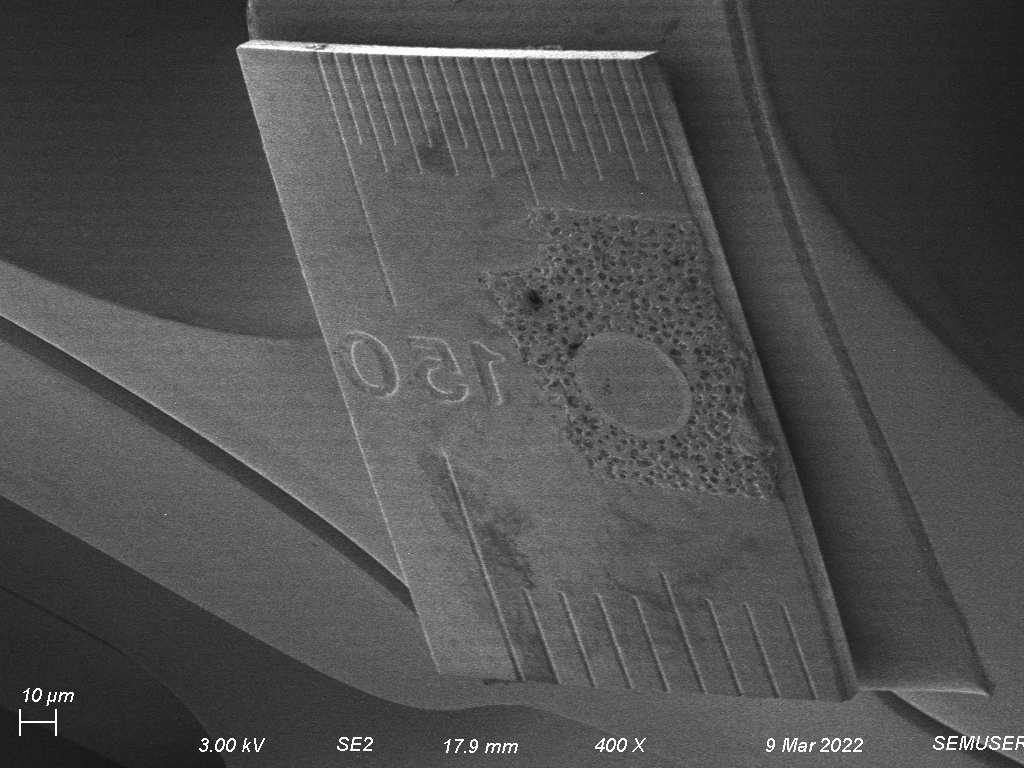
Reflective Imaging in Scanning Electron Microscopes
Investigation and analysis of creating mirror fields to deflect the primary electron beam with charged materials. Electron mirrors produce a fisheye view of the interior of the SEM sample chamber.
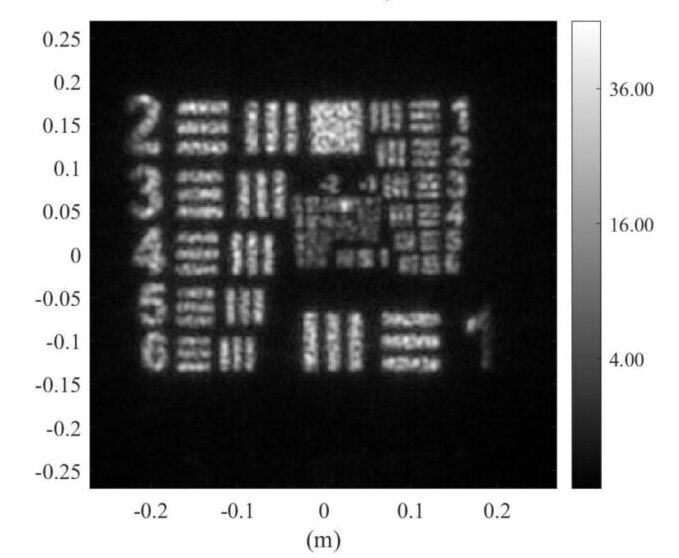
Effects of Estimate Phase Screen Placement
on Digital Holography Imaging Through
Atmospheric Turbulence
Determining where best to locate estimate phase screens when correcting volume turbulence through post-processing
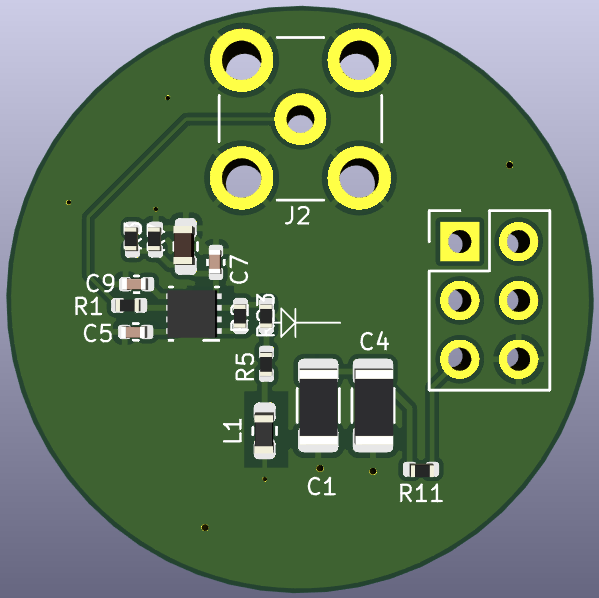
Improving silicon photomultiplier bandwidth for fast, low-signal applications.

In this thesis, we numerically and analytically analyzed the superposition of multiple paraxial plane waves and discovered the pattern of such superpositions composing FP fields.
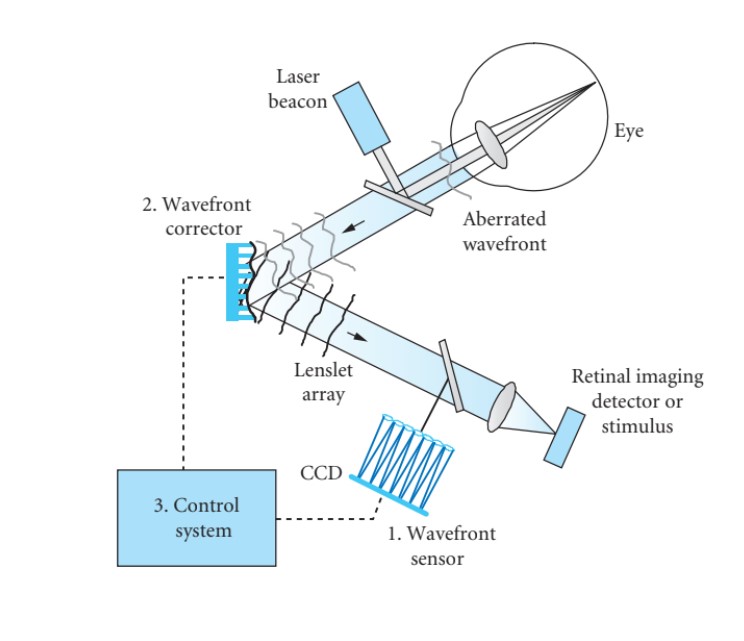
Zhengynag Xu Thesis
Improving closed-loop wavefront correction speed for primate retinal imaging.

Yanik Thesis
Probability distributions of work and entropy of a qubit engine powered by simultaneous weak quantum measurements.

iTEST
Team Rachel Chan Zihao Li Sinabu Pumulo Mentor Brandon Zimmerman Abstract The Clear Eye Test is a virtual eye prescription platform that measures refractive error of the eye with a…
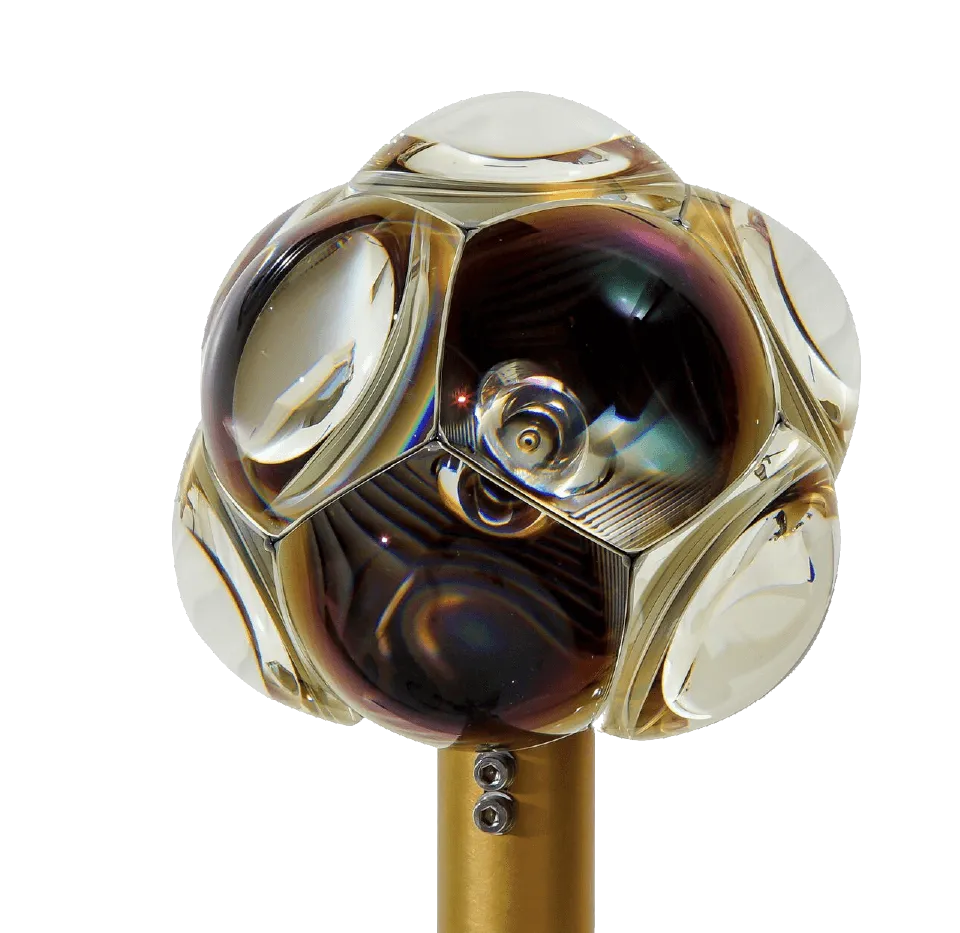
Venturing into the fully reflective design space to find a wide angle telescopic design that is parallax corrected so that they can be tiled to capture a much higher field of view.
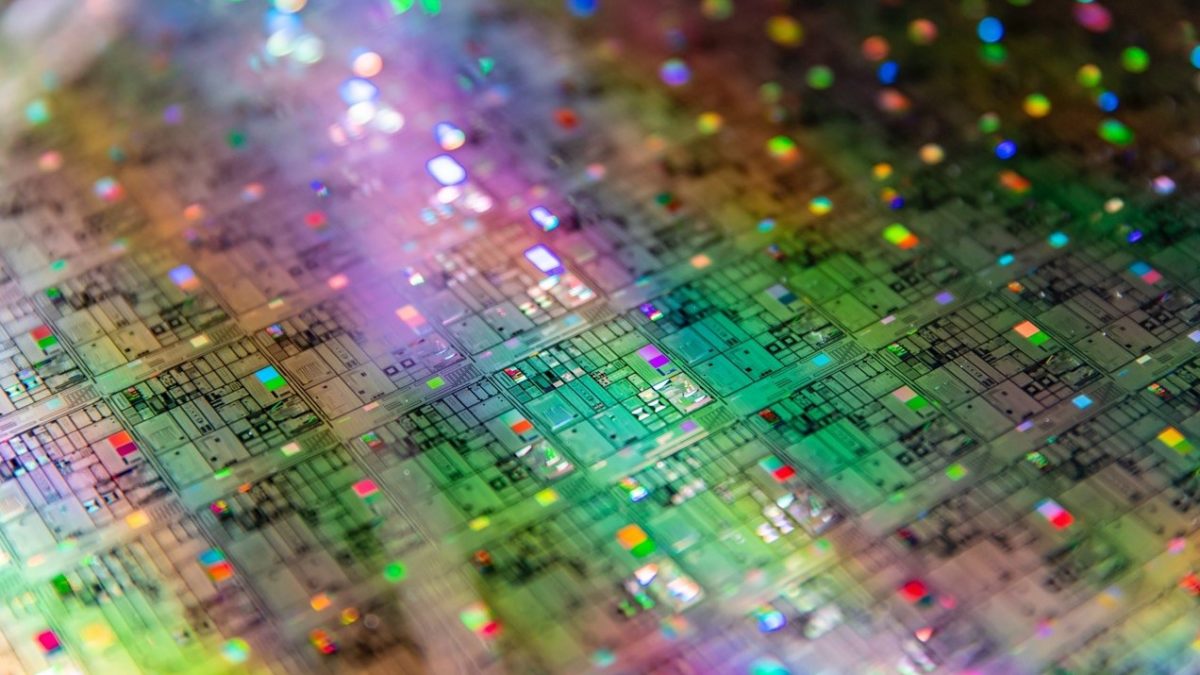
Designing a Hadamard gate on an integrated Silicon photonic chip
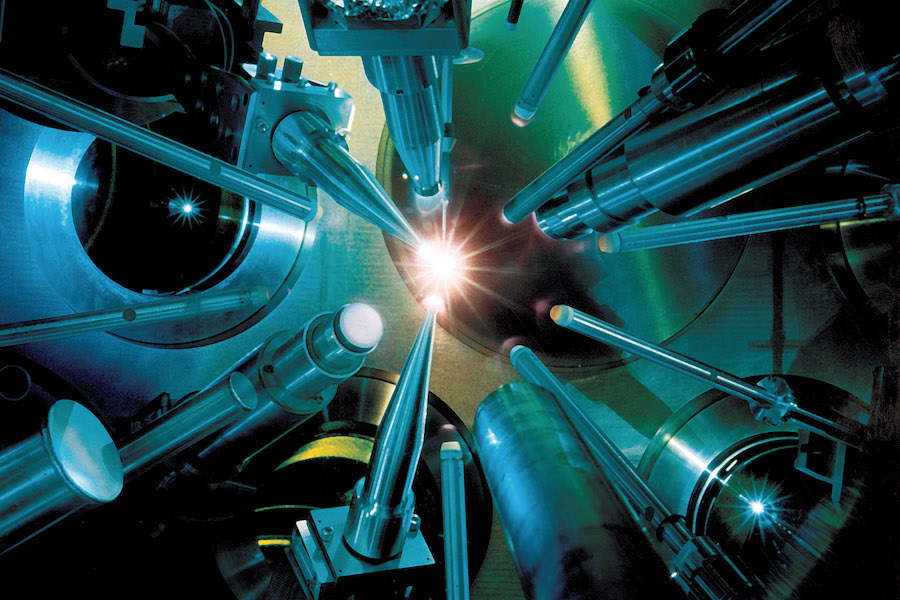
Jonathan Musgrave Advisor: Dr. Jake Bromage Optical Parametric Chirp Pulse Amplification (OPCPA) is an intensely researched topic and has gained a lot of traction in the past 25 years for…

Plasmonic Nanoantenna Array Metasurfaces and Colloidal Nanoparticles for Single-Photon Source Applications
Investigating indistinguishable single-photon sources in the visible range.
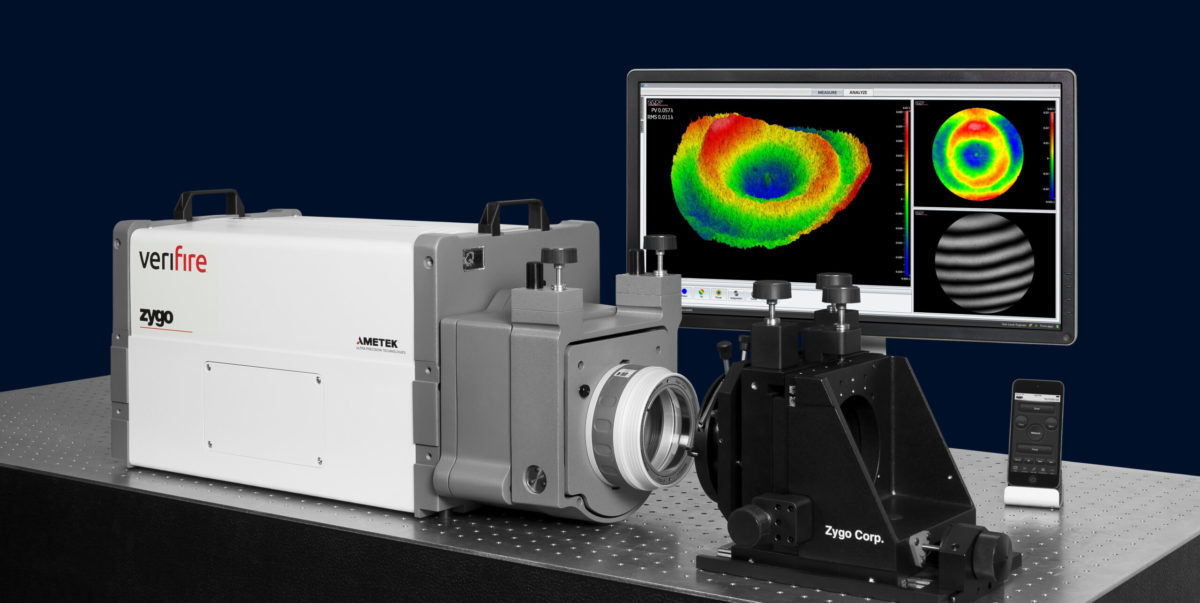
WOBBLY
Exploring mechanical solutions to reduce the effects of turbulence on the Zygo Verifire™ interferometer

Team Thermo
The solar steam turbine is a design that uses a femtosecond laser-processed superwicking metal sheet to generate electricity via steam generation. Team Thermo wishes to thank the following for their…
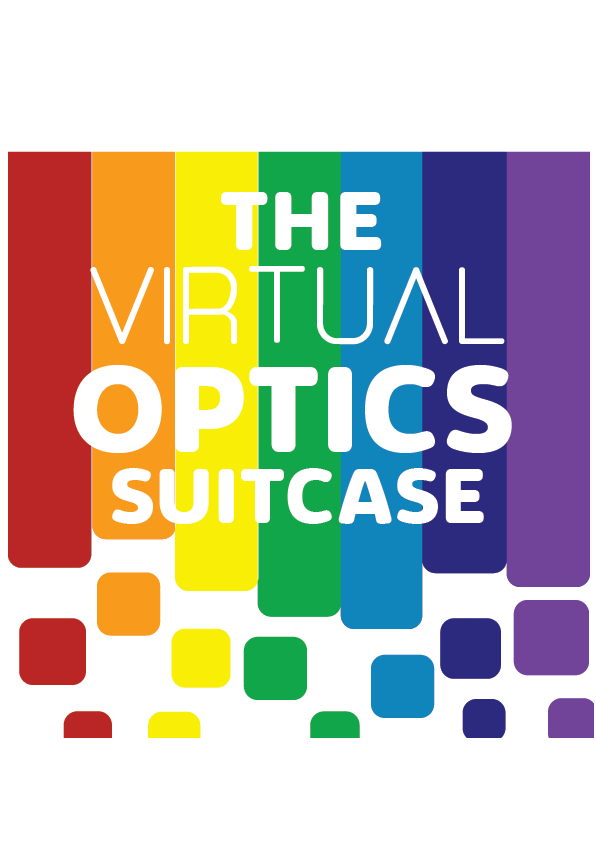
SUITCASE
The Virtual Optics Suitcase makes engaging optics demonstrations accessible, encouraging careers in STEM.
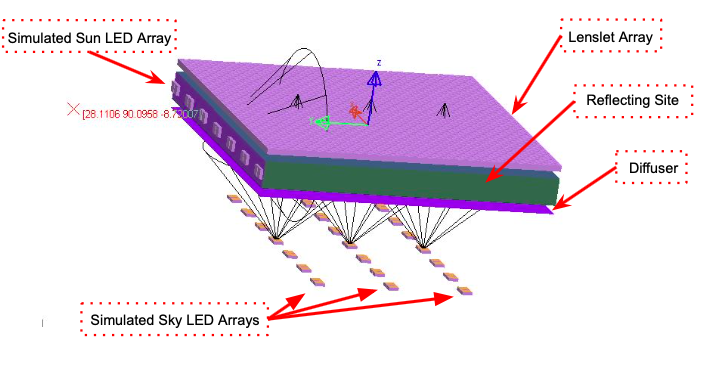
SKY
An indoor lighting system designed to simulate the sun.

OTICS
The Hybrid Endoscope/Microscope project is a senior design project that aims to design and build a system that combines the endoscope’s view and the microscope’s view during ENT surgery.
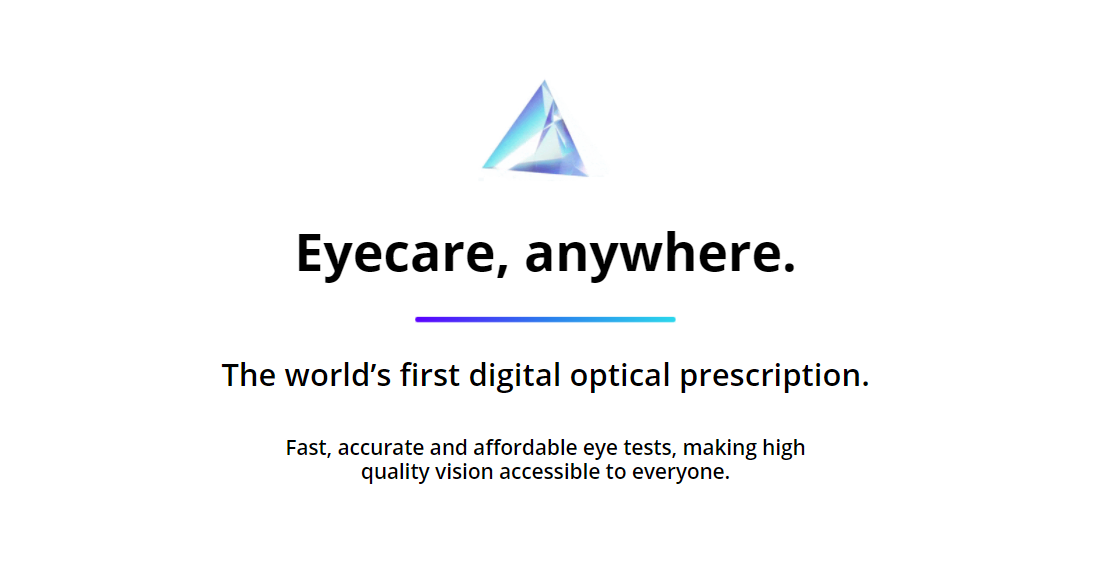
EYEZ
Development of a telehealth platform that provides digital optical prescriptions, making high quality vision accessible to everyone.
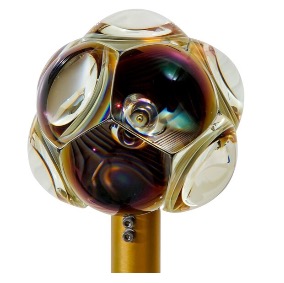
CIRCLE
A 360° tessellated, parallax-reduced, cinema camera system.
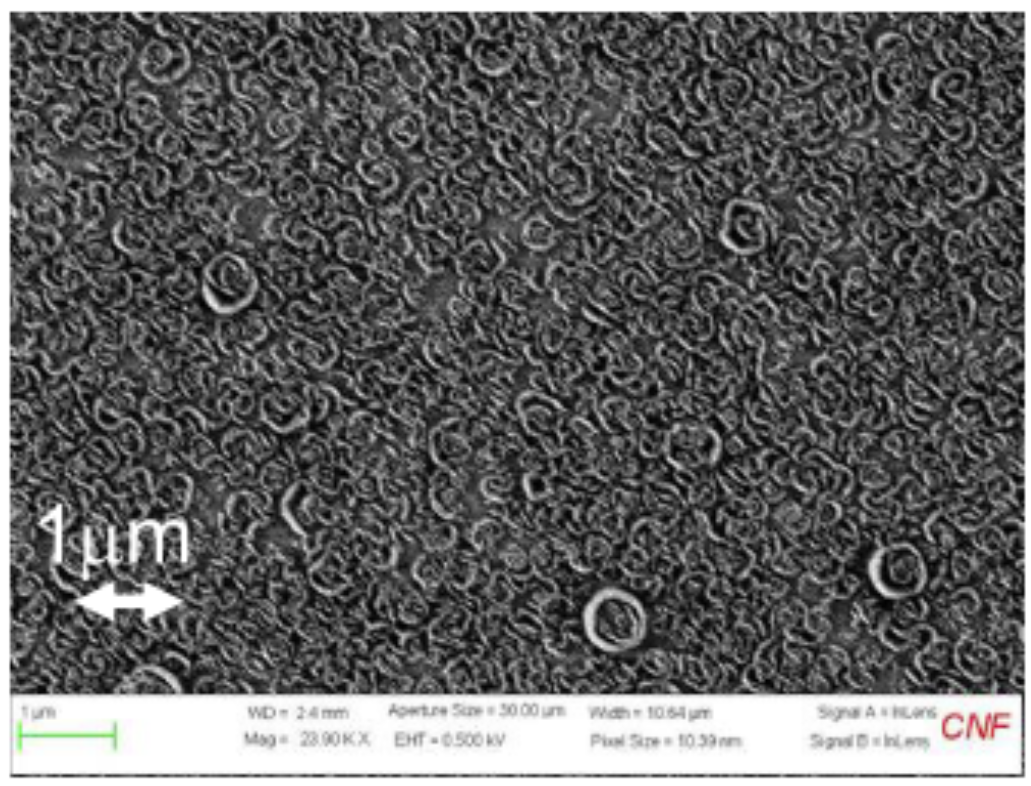
AR
The Nanostructure AR coating project aims to Investigate and model nanostructure AR coatings on OptiLayer and OptiRE software.
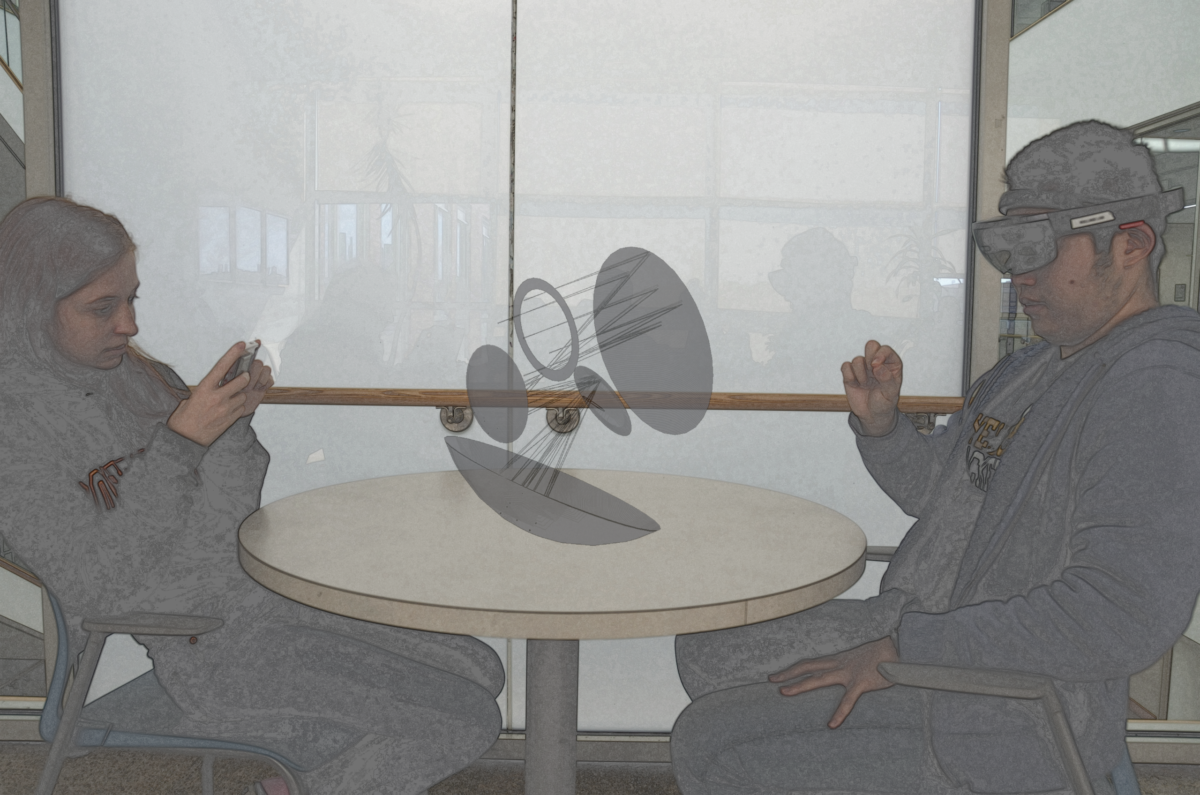
Hyperion is a 3D visualization platform for optical design. It provides a fully immersive, and interactive 3D user experience. It enables the visualization of models of folded freeform optical systems. The frontend user experience is supported by the computational ray-tracing engine of Eikonal+, an optical design research software. We have built a cross-platform light-weight version of Eikonal+ that can communicate with any user interface. We have also demonstrated a prototype of the 3D user experience using a Hololens AR display.

